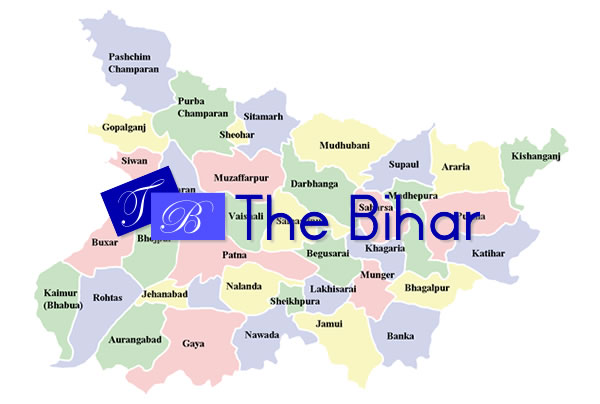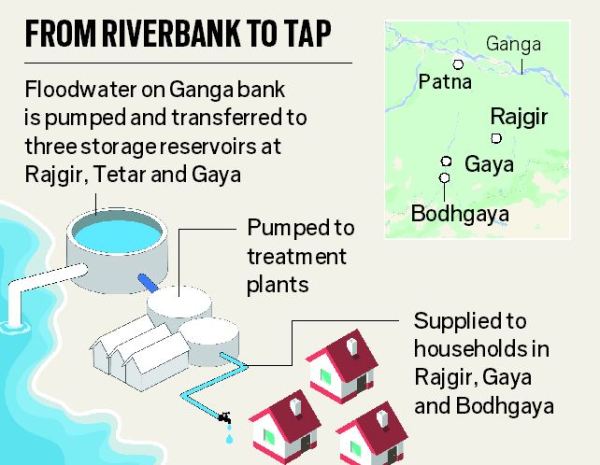Madhepura
5 min readMadhepura is a city and a municipality in Madhepura district in the Indian state of Bihar.
Madhepura as it stands now was carved out of Saharsa district and got the status of revenue district on 9 May, 1981. Prior to this Madhepura was a sub-division under Bhagalpur district with effect from 3 September, 1845. Subsequently, it was on 1 April, 1954 that Saharsa district was carved out of Bhagalpur district. Situated at 6.34 latitude and 86.19 longitudes, Madhepura with its damper climate and sandy soil is expanded up to 1888.5 sq.km
HistoryThe history of Madhepura can be traced back to the reign of Kushan Dynasty of Ancient India. The “Bhant” communities living in villages of Basantpur and Raibhir under Shankarpur block are the descendants of the Kushan Dynasty. Madhepura was then part of Maurya Dynasty, a fact asserted by the Mauryan pillar at Uda-kishunganj. The name Madhepura is believed to have evolved from Gangapur- a village named after Gangadeo, the grandson of King Mithi, who is said to have established state Mithila. Gangapur village itself is said to be named after King Gangsen of the Sen Dynasty. From 1704 A.D. to 1892, the Kosi river with its diverse courses remained striding the areas right from Forbisganj to Chandeli Karamchand and Raghuvansha Nagar & thereafter submerging itself into the Ganges at Kursela. As Madhepura stands at the centre of Kosi ravine, it was called Madhyapura- a place centrally situated which was subsequently transformed as Madhipura into present Madhepura. Another view is also there as to its naming as the area is said to have been inhabited by the bulk of Madhavas – clan of Lord Krishna. It was termed as Madhavpur which gradually became Madhavpur into Madhepura. (Extracted from Brihad Hindi Kosh, 5th Edition, Page- 887). In ancient times, Madhepura remained a part of Anga Desh. It was also governed by Maurya, Sunga, Kanva and Kushan dynasties. It was a part of Mithila province during Gupta Dynasty. The Mauryan Pillar discovered at Kishunganj bears testimony to it. Madhepura remained under the dominance of Bihar rulers during Rajput rule. Present Raibhir village under Singheshwar block was a stronghold of Bhars. During Mughal period Madhepura remained under Sarkar Tirhut. A mosque of the time of Akbar is still present in Sarsandi village under Uda-Kishunganj. Sikander Sah had also visited the district, which is evident from the coins discovered from Sahugarh village
Madhepura and River Kosi
As such Madhepura district stands on the heaps of ravages caused by the mythological river Kosi originating at a height of 5400 meters in the Himalayas and crossing Tibet reaching plains at Chatra in Nepal and in India in the border of Madhubani & Darbhanga and flowing through Supaul & Saharsa negotiates with the Ganges near Kursela covering 254 km. The legend has it that Satyavati, the young sister of Vishwamitra, after being widowed at the demise of her old husband Richik reached heaven and appeared on the earth in the form of struggling and ravaging Kosi river, popularly known as the ‘sorrow of Bihar’. (Extracted from Shaiv Avdharna Aur Singheshwar Asthan – Written by Harishankar Shrivastava ‘Salav’ & Dainik Jagran, Bhagalpur, Nagar Sanskaran, dated 30.07.03). Facing the onslaughts of the Kosi river, the history of Madhepura is replete with tales of owes, sorrow and sufferings. Since time immemorial, it has seen several ups and downs perpetuated by Kosi in the form of flood, famine and drought. Floods and droughts have remained the regular feature of the area so much so that the then Government had to shift the Court & the Sub-divisional headquarters from Madhepura to Supaul from 1935 to 1938.
Religious Connections
The place has remained the meditation ground of Lord Shiva and other Gods. Sri Hari Shankar Shrivastav ‘Salav’, a distinguished historian, finds the area of Madhepura part of Singheshwar as the place of adoration and experiment of Vivandak and his son Rishya Shringa. The name of village Satokhar standing on the western embankment of one of the tributaries of Kosi west of Singheshwar at a distance of 5 km has been derived from Sanskrit word Sapta Pokhar – Seven Ponds, said to have been created ‘Yajna Shala’ by Rishi Shring for Putreshthi Yajna (Sacrificial ceremony for a son’s birth). Rishi Shring at the request of his wife Santa, the adopted daughter of Rompad, agreed and performed the Yajna to precipitate God to bless King Dashratha with sons. Consequently, the wives of Dashratha were impregnated after taking medicated Khir prepared by Rishi Shring and their sons Ram, Laxman, Bharat & Shatrughan were born one after the other. The Bharat Puran also refers to Singheshwar as Sringeshwar. The area has been identified as Rishi Shring Ashram during Ramayana period, its vicinity being surrounded by jungle inhabited by deer, leopards, bears, etc. King Yudhishthir is said to have visited the place along with Rishi Lomus during Mahabharat period. Sheet and Basant both rulers of Kushan dynasty inhabited in this area. The fort of Sheet was located at present Kadamma whereas the fort of Basant was located at present Basantpur, a village under Singheshwar block. Ruins and remains of those forts are still visible. Sri Nagar- a village under Ghailarh block recently carved out of Madhepura block situated at a distance of 22 Kilometers west of Madhepura town also present the remains of the two forts of King Sri Deva.
India’s freedom struggle against British Raj
In the history of Indian National Congress, Madhepura had due prominence, being stronghold during freedom Movement. The delegation led by Babu Rash Bihari Lal Mandal participated in the 25th Session of Indian National Congress at Allahabad in 1910. Prominent leaders of Khaddar Andolan wereJai Narayan Mandal & Raj Kishore Chaudhary. Dr. Rajendra Prasad & Md. Saukat Ali conducted relief works after the earthquake of 1934. The place was also visited by Mahatma Gandhi. During Quit India Movement, Bhupendra Narayan Mandal had a prominent role and it was under his leadership that a 14 years old boy Hare Krishna Chaudhary unfurled the national Tri-Colour on the Treasury building of Madhepura court on 13 August, 1942. The legend has it that Satyavati, the young sister of Vishwamitra, after being widowed at the demise of her old husband Richik reached heaven and appeared on the earth in the form of struggling and raveging Kosi river, popularly known as the ‘sorrow of Bihar’. (Extracted from Shaiv Avdharna Aur Singheshwar Asthan – Written by Harishankar Shrivastava ‘Salav’ & Dainik Jagran, Bhagalpur, Nagar Sanskaran, dated 30.07.03).
Demographics
As of 2001 India census, Madhepura had a population of 45,015. Males constitute 55% of the population and females 45%. Madhepura has an average literacy rate of 62%, higher than the national average of 59.5%: male literacy is 71%, and female literacy is 51%. In Madhepura, 15% of the population is under 6 years of age.
Villages
Arraha, Mahua, Dighra, Sabella, Bhaun, Piprahi, Dhanchoha, Puraini Bazzar, Chausa Toka jibchpur
Nayatola


